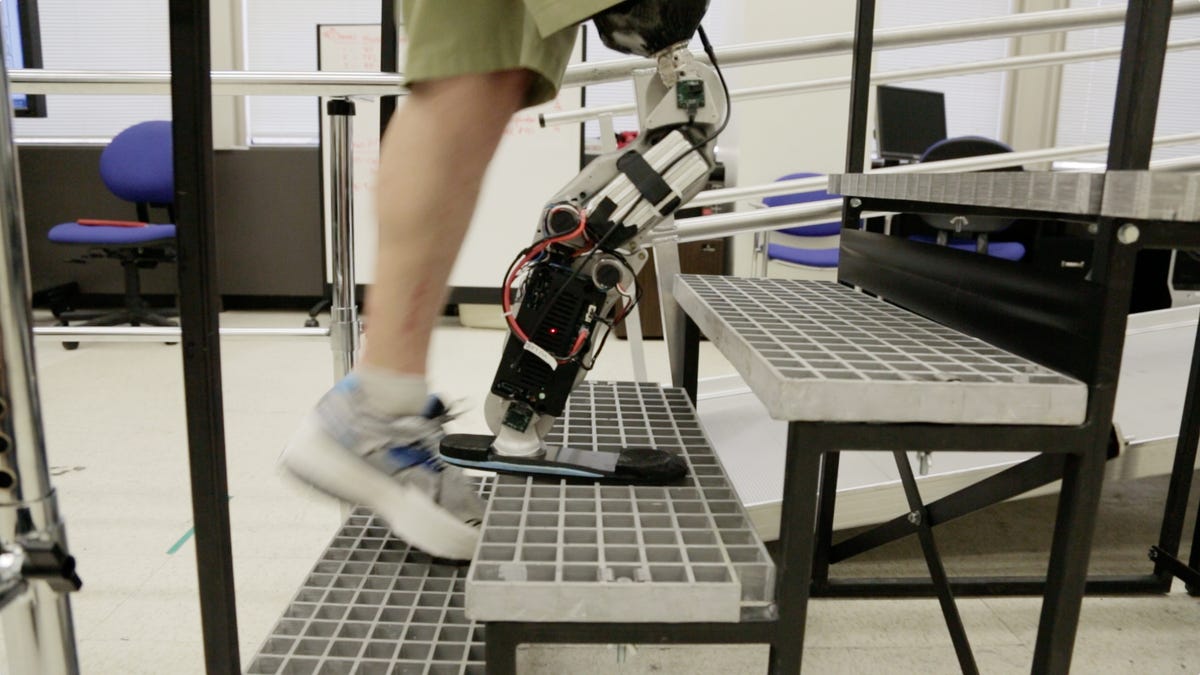World's first thought-controlled bionic leg (pictures)
Created using the hardware of Vanderbilt University and the advanced algorithms of the RIC, this bionic leg is the most advanced below-the-waist prosthetic limb ever created.

Unprecedented movement
Zac Vawter's thought-controlled bionic limb, designed and developed by Vanderbilt University and used in conjunction with groundbreaking techniques at the Rehabilitation Institute of Chicago (RIC), allows for "activities unprecedented for any leg amputee," said lead researcher Dr. Levi Hargrove of the RIC.
That includes moving between sitting and standing up and ascending and descending stairs. Vawter took the leg to task last year when he climbed all 103 flights of Chicago's Willis Tower.
'A huge milestone'
After suffering a motorcycle accident nearly five years ago, Zac Vawter, now 32 years old and living in Seattle, lost his right leg below the knee. However, at roughly the same time, the Rehabilitation Institute of Chicago and Northwestern University had developed a specialized surgery, called targeted muscle reinnervation. Vawter applied to be a volunteer and was an ideal candidate for the surgery because his amputation was below the knee.
"For the first time since my injury, the bionic leg allows me to seamlessly walk up and down stairs and even reposition the prosthetic by thinking about the movement I want to perform. This is a huge milestone for me and for all leg amputees," Vawter said.
Controlling your ankle with your hamstring
Targeted muscle reinnervation, developed in 2009 by doctors Gregory Dumanian and Todd Kuiken, is a groundbreaking approach to more natural artificial limb movement that rewires remaining nerves in an amputee's residual limb to healthier muscle tissue, essentially rerouting the end destination of one's thoughts.
For Zawter, the RIC bionics team took "nerves that would have gone down to his ankle and rewired them to his hamstring," explained Dr. Annie Simon. The result was that when Zawter thought about moving his ankle, the nerve -- rewired to his hamstring muscle -- felt the contraction, and attached electrodes translated that into foot movement for the bionic limb.
Nearly eight years in the making
While the RIC developed the algorithms and conducted the research on the world's first thought-controlled bionic limb, the actual hardware studied by the team and used by volunteer Zac Vawter was designed by Vanderbilt University over the course of seven and a half years.
Once the RIC received $8 million in funding from the US army -- an effort to bolster artificial limb development to improve the lives of injured veterans -- they were able to begin testing on Vawter and refining the software and hardware of the bionic limb. The team expects to see the device in home trials in the next three to five years.
The second-generation thought-controlled leg
Currently, the RIC has only one thought-controlled bionic limb, and Vawter has yet to push its boundaries, like using it in everyday home use. "If there is a difference between what he intended to do and what the prosthesis does, we want it to just be the equivalent of, say, stubbing your toe," said Dr. Annie Simon.
To make a more durable and robust leg, equipped with a closed casing, Vanderbilt University is working with prosthetic limb manufacturer Freedom Innovations to create a second iteration that will be closer in design to a consumer-grade product.
Advanced on-the-market prosthetics
Consumer-grade prosthetic limbs, like the Bebionic3 arm featured above, are extraordinarily high-tech artificial limbs already on the market that rely not on thought control, but instead on over-the-skin electrodes and internal motors.
The Bebionic3 allows users to use one of up to 14 selectable grip patterns, can move individual fingers, and can even be used for as delicate a task as cracking an egg.
Sensory feedback: Not impossible, but still far off
Researchers like the RIC's Levi Hargrove imagine a day when prosthetic limbs aren't just controlled with our thoughts using rerouted nerves, but are able to transmit sensory feedback to users.
That means feeling the grass beneath one's feet or experiencing the hard-to-describe sensation of holding up one's arm or leg and suspending it in the air. "In order to get these advancements, we would need cutting-edge sensors that could perhaps be implanted in the body that could directly interface with the nerve," Hargrove said.

